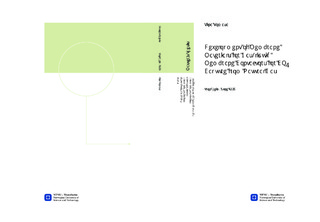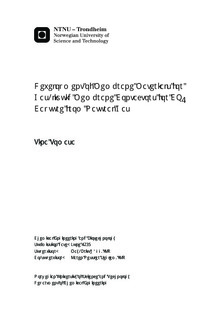| dc.description.abstract | In this work, membrane materials are developed with the purpose to be used in a gas-liquid membrane contactor for CO2 capture from natural gas. The amine, methyl diethanolamine (MDEA), is to be used in the liquid phase as the absorbent. This requires a hydrophobic membrane material with high permeabilities and good compatibility with the absorption liquid.Poly(1-trimethysilyl-1-propyne) (PTMSP) is a glassy, high free volume polymer, which achieves the highest gas permeabilities of al known polymers. The permeabilities are however known to be unstable over time due to physical aging of PTMSP. Thermal crosslinking of PTMSP with the bis(azide) 4,4-diazidobenzophenone (BAA) has showed to increase the membrane?s chemical and physical stability. Crosslinking increased the resistance towards solvents such as toluene. The gas permeabilities of the membranes were tested for three different gases: N2, CH4 and CO2 at 2, 4 and 6 bar. The gas permeability decreased upon crosslinking but was stable with time. This decrease in permeability is related to the decrease in fractional free volume (FFV) upon crosslinking. Addition of nanoparticles have shown to increase the permeabilities again. Referring to the project work from the fall 2012, addition of nanoparticles of the size 15 nm decreased the permeabilities. They might have blocked the free volume. Clusters (1-3 µm) of TiO2 nanoparticles with the primary size 21 nm was used in this work and showed promising results as the permeability increased with increasing nanoparticle content. Several membranes of pure PTMSP, crosslinked PTMSP, and crosslinked nanofilled PTMSP membranes were exposed to distilled water, 2M MDEA and 4.2M MDEA up to 10 weeks (4 weeks for crosslinked nanofilled membranes). Permeation of pure PTMSP showed the same trend as the aging curve. Crosslinked PTMSP showed a decreasing trend the longer the membranes stayed in the solutions. Based on the selectivities, this trend might have been caused by the reduction in the solubility coefficients. Crosslinked nanofilled membranes on the other hand, showed approximate 90% lower permeability than corresponding membranes which have not been in contact with any solutions. Fourier Transform Infrared (FT-IR) spectroscopy was used to characterize the membrane materials to see the presence of chemical groups and to see how they change upon crosslinking. FT-IR spectra of PTMSP with BAA showed a peak at 2122 cm-1 (azide group), which disappeared after thermal crosslinking of the membrane. This leaves BAA with a reactive bis(nitrene) that is ready to bond with PTMSP. Microscopic pictures have shown how the free volume in crosslinked membrane decreases as the content of BAA increases.Other characteristic methods like contact angle measurements were used. The requirements are a hydrophobic material, which indicate that the liquid should not wet the surface (contact angle > 90°). The water contact angles were above 90°. Membranes exposed to solutions showed that the highest contact angles were observed for membranes soaked in 4.2M MDEA, followed by 2M MDEA. The viscosity of polymer solutions were found by using a rheometer and the results were correlated to the permeabilities. Thermogravimetric analysis (TGA) showed thermal degradation of PTMSP at 350°C. | nb_NO |

